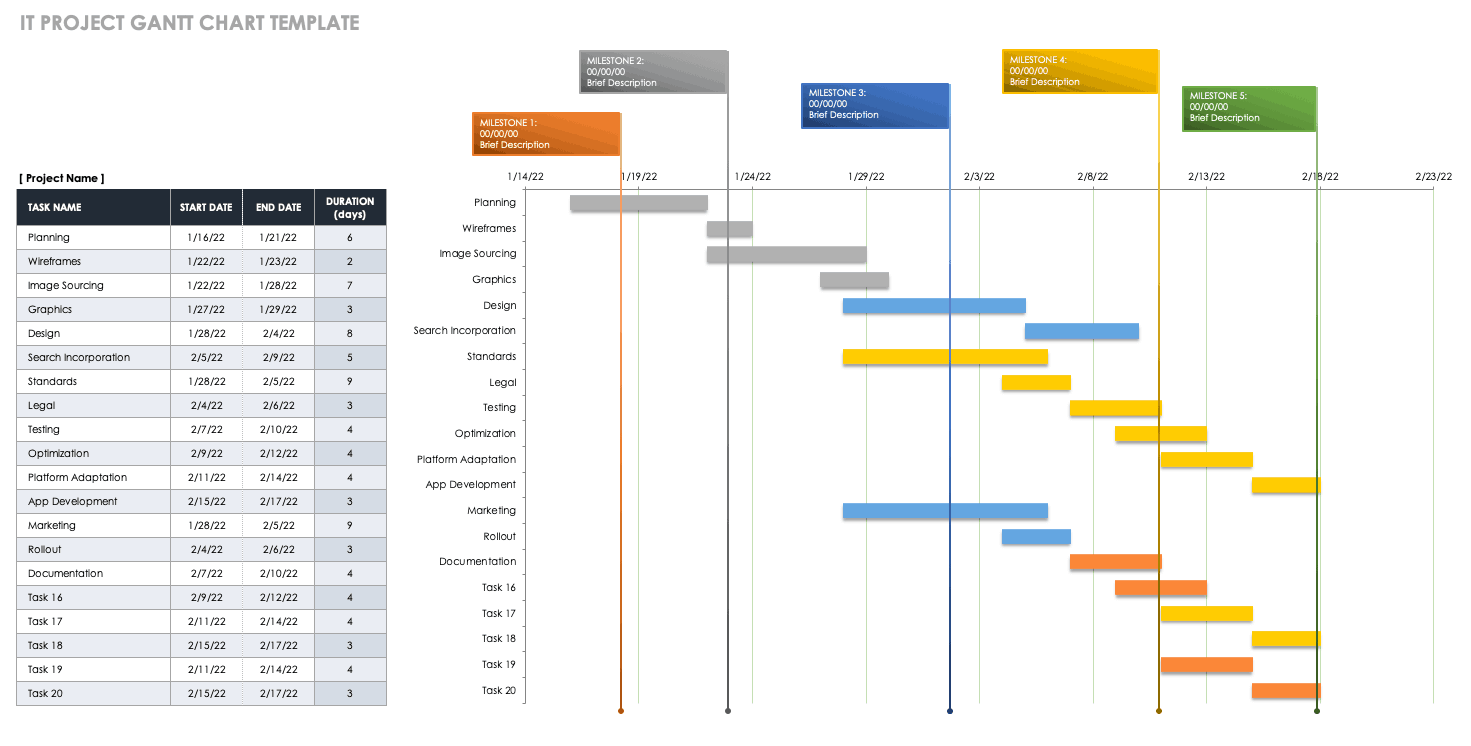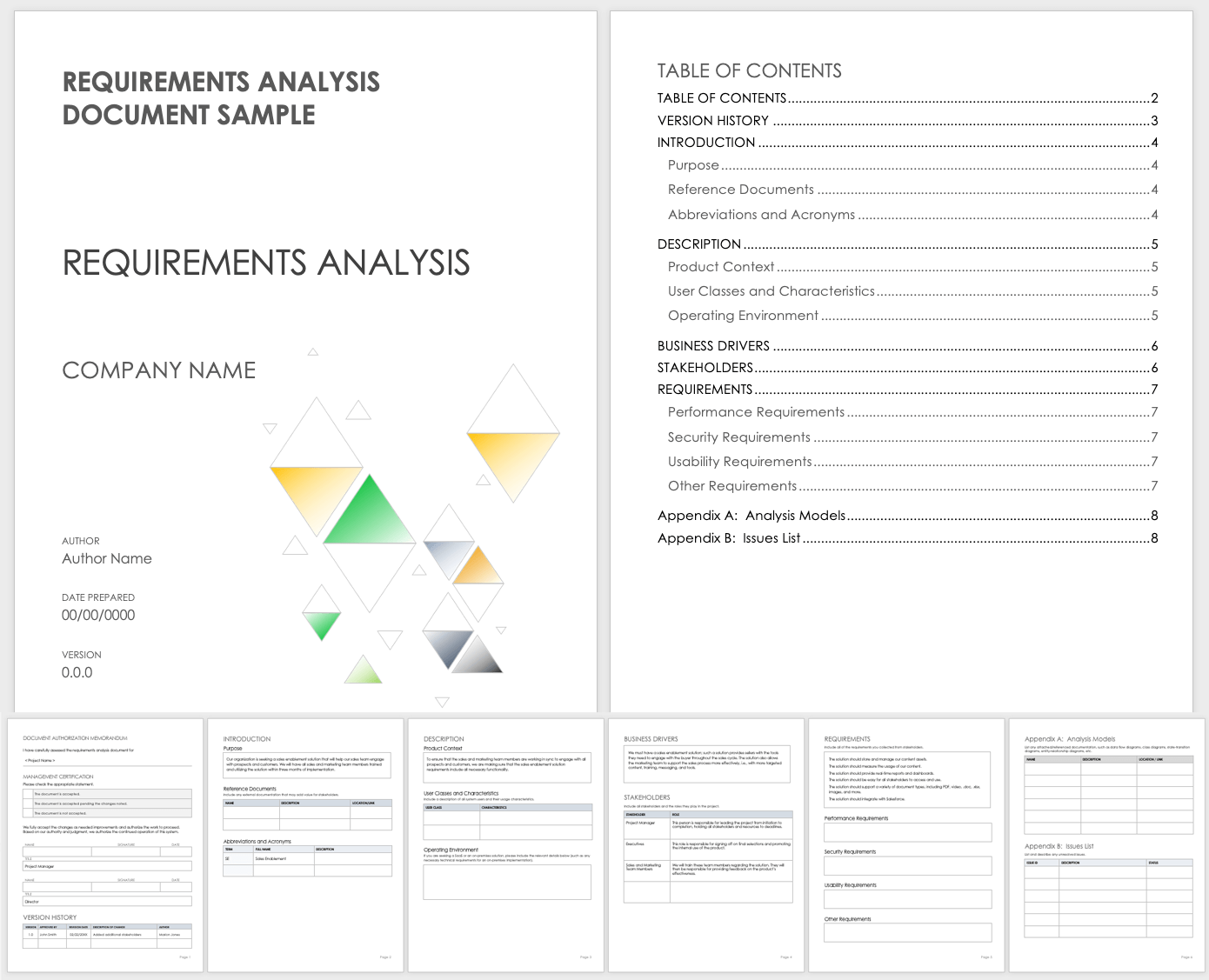What Is Requirement Analysis in Project Management?
Requirement analysis is an element of project management that helps ensure clarity, completeness, and relevance. The goal is to define expectations for a project. The requirements may apply to software development, process improvement, or a new technology purchase.
Purpose of Requirement Analysis
The purpose of requirements analysis is to collect the information necessary to design a product to meet the needs of stakeholders. Once the requirements analysis is complete, it will align with tasks that result in a suitable product.
Alexis Nicole White, a certified project manager (PMP), scrum master (SCM), and project delivery consultant with North Highland concurs: “The purpose of requirement analysis is to understand if the identified outcome aligns with the overall needs of the end-users by documenting, validating, and identifying any gaps within said requirements. Three types of conditions need addressing: business (why), functional (how), and technical (what) purpose of the product. It is best to compare current state processes with future processes to help identify gaps and flush out any additional concerns.
“Therefore, it is critical to have the correct stakeholders involved during this period to identify the customer's needs, understand the feasibility, and evaluate the technical conditions to support the implementation. Lastly, the requirements help cultivate the acceptance criteria,” White notes.
Types of Requirement Analysis
The main types of requirements analysis include business, customer, product, functional, and non-functional requirements. Each one represents a stakeholder or stage of the project and communicates the project needs.
- Business Requirements: The business requirements include high-level needs that will help achieve a company’s objectives. They align with business objectives, mission, and goals. Specific features are not part of business requirements.
- Customer Requirements: These requirements include expectations of how a product will meet the needs of a specific user group.
- Design Requirements: Design requirements are a result of customer and product requirements. They convert the needs of the business and customers into design features.
- Functional Requirements: A functional requirement is a subset of a product requirement. It describes the service that a software product must deliver, including the specific behaviors of features and functions.
- Non-Functional Requirements: A non-functional requirement is a general quality attribute of a solution, such as a performance measurement.
- Product/Service Requirements: A product requirement document (PRD) is an artifact that outlines the purpose, characteristics, functions, and features of a product, including software. The PRD is completed before development.
What Is the Difference Between Business Requirements and Software Requirements?
Business requirements include the business objectives expected from the final software product. Software requirements describe the solution’s main functions to meet the business objectives. Business requirements translate into software requirements.
| Business Requirements | Software Requirement | |
|---|---|---|
| Purpose | Business requirements include details about what software needs to do to meet business objectives. | Software requirements are the functional and non-functional requirements of the software. |
| Example Requirement | We need to communicate with customers each time they download our content. | The system will send an email to the user when they enter their contact information into a web form. |
| Who Creates | Client or representative working with the client. | Business analyst or technical expert. |
| What Is Included |
|
|
| How It Is Derived | From interactions with the client. | From the business requirements. |
What Is IT Requirement Analysis?
IT requirements analysis aims to ensure IT alignment with a company’s business strategy. Most organizations rely on technology to remain operational. The technology they use must be adequate to maintain operations without being a burden.
Defining business requirements helps identify and remedy gaps that may exist in IT services. According to “A Requirements Analysis Framework for Validating Strategic Alignment of Organizational IT Based on Strategy, Context, and Process” paper, “Strategic alignment of IT exists when a business organization's goals, activities, and processes are in harmony with the information systems that support them.”
Practical Software Requirement Analysis Techniques
A variety of requirement analysis techniques are available, including Business Process Modeling Notation (BPMN), Gantt charts, flowcharts, and gap analysis. Precise and accurate software requirements are essential to project success. Requirement analysis helps identify the customers’ needs.
Consultant White prefers to start with the BPMN technique. “When documenting requirements, I always like to start with the BPMN (current state) mapping and work my way to the future state process by creating a flowchart. I measure that with the requirements we collect and document the gaps. Then we identify a use case based on the content diagram and identify further gaps,” she explains.
“Additionally, with the understanding that requirements gathering occurs within the project's discovery phase, I leverage Gantt charts to highlight the length of time it will take for each prospective role to complete their discovery work and call out any dependencies and successors from work performed,” White continues.
| Requirement Analysis Technique | Details | Benefits | When to Use |
|---|---|---|---|
| BPMN | Graphical representation used for modeling entire business processes using various objects, such as flow objects, connecting objects, swim lanes, and artifacts. |
|
|
| Flowchart | Represents the sequential flow of activities. |
|
|
| Gantt Chart | A graphical representation of a project schedule. The vertical axis includes the tasks, while the horizontal axis lists the activity duration. |
|
|
| Gap Analysis | Compares current software state to future desired state. This helps identify missing functionality. |
|
|
| Role-Activity Diagrams (RAD) | Valuable to document processes now and in the future. The RAD illustrates a process with roles, actions, interactions, and external events. |
|
|
| Unified Modeling Language (UML) | Primarily used to model software systems. There are two types of UML diagrams: behavioral and structural. Behavioral is what the system does, while structural is what the system consists of. |
|
|
Business Process Modeling Notation
Business process modeling notation (BPMN) helps visually document the elements of a business process. The team maps out the current state as a baseline and determines the future desired state. By viewing the business process, businesses can make improvement decisions.
Below is a sample BPMN diagram that shows a simple process. The process begins with the first task in the customer lane, lane 2 represents the work going to the first-level support department, and lane 3 illustrates escalation to second-level support. The work is sent back to the customer to complete the process.
Learn more about how to use BPMN.
Unified Modeling Language
Unified Modeling Language (UML) is an object-oriented modeling language primarily used in software engineering to visualize system design. A behavioral UML diagram demonstrates what the system will do. A structural UML model includes elements that make up the system.
Flowchart
Flowcharts are a common way to illustrate the sequence of business processes. Using a flowchart helps demonstrate the progress of activities. They can represent how a system interacts, how data flows, and showcase elements of a process.
Role-Activity Diagrams
The role-activity diagram (RAD) is like a flowchart, but it also contains the participants at each process step. This technique requires an understanding of roles and responsibilities.
Gantt Charts
Gantt charts graphically represent the timeline of a project’s tasks. The chart will show the total time for each activity along with dependencies and resources.
Gantt chart templates are helpful to use for simple project tracking, more complex dependency management, and IT projects.
Gap Analysis
A gap analysis is a technique to help identify the differences between the current state and the future desired state. This method is useful for business processes or software development projects.
Below is a software gap analysis that illustrates the current and future state of a software application’s functionality. The proposal column includes a suggestion for reaching the desired state. A variety of gap analysis templates are also available for business processes, skills, training, and vendors.
How to Do Requirement Analysis
Requirement analysis starts with a team that collects data. After gathering all of the requirement data, analysis, and modeling, a review will occur. The best requirements are well-documented, measurable, and clear, and they help identify improvement opportunities.
General Steps in Requirement Analysis
Below you will find the most common steps teams take to gather appropriate project requirements. Performing these four activities ensure you paint a clear picture of requirements that align with business or customer needs.
1. Gather requirements.
This stage of the process involves the collection of requirements by communicating with the client or stakeholders. Example data collected during this stage may include a requirement for access to a product from a mobile device or a dashboard that provides real-time metrics.
2. Analyze requirements.
Analysis ensures that requirements are clear, complete, and consistent. During this phase, the team will review all requirements to ensure each requirement statement is clear. They want to verify that there are no contradictions and all requirements align with the goal of the project.
3. Requirements modeling.
Modeling is the way a team will document the requirements. They will use different formats that help visualize processes, detail use cases, or document specifications. Modeling can use any of the six practical software requirement analysis techniques.
4. Review.
The review stage provides time to reexamine the process and resulting documents, and identify areas for improvement. During a project post-mortem, the project leader, team, and stakeholders uncover what worked and what didn’t so that they can learn lessons for the future. Use a post-mortem template to document the results of your project.
Expert Tips and Best Practices for Performing Requirement Analysis
Current best practices for requirement analysis come from the Business Analysis Body of Knowledge (BABOK). The publication suggests areas of knowledge for analysts. Of note, they dedicate an entire section to prioritizing requirements.
BABOK suggests, “Prioritization of requirements ensures that analysis and implementation efforts focus on the most critical requirements.”
All stakeholders must agree on requirement importance while ensuring they are unambiguous, testable, and feasible. White agrees: “You must have all key stakeholders participating in the requirements collection process and the analysis of said findings. Apart from the project's leadership, one needs technical resources (developers, architects) and business analysis, and a few end-users to guide how to make the project a success.”
What Is a Requirement Analysis Document?
The requirement analysis document enables users to collect, organize, and track requirements. The goal is to ensure all requirements are in one location. The document guides planning and project management.
To complete the requirement analysis document, work with stakeholders or the client to gather requirements; use a template that includes the purpose, people, needs, and history; and ensure all stakeholders agree on the final conditions.
Below are the essential elements that comprise a requirement analysis document:
- Business Drivers: Write the needs statement that presents the business case for the project.
- Description: The document's purpose describes the project name and the type of requirements and contents in the document.
- History: The version history section documents each revision to the document, author, date, and approver.
- Purpose: A high-level description of the project’s goals and objectives.
- Requirements: Provide a summary of the project’s requirements. Use shall where requirements are stated, will for facts, and should to represent a goal.
- Signoff: Each stakeholder provides their signature, signifying they accept or reject the requirements. These signatures are necessary to authorize work to proceed.
- Stakeholders: Identify the stakeholders and their roles in the project, including the expectations and any additional resources you will need.
Requirement Analysis Example and Template
Download Requirements Analysis Document Sample
Download Requirements Analysis Document Template - Word
This requirement analysis example illustrates the content that may become part of a requirements document. In this example, the business is seeking a sales enablement solution. The requirements directly support the purpose of the project.
Requirement Analysis Challenges
Gathering requirements is one of the most complex stages of requirement analysis. Unclear requirements and communication problems can cause complications. Without clarity between the analyst and stakeholders, the project will likely fail.
There are five common challenges in requirement analysis:
- Changing requirements
- Communication problems between the client or stakeholders and analyst
- Lack of access to stakeholders or difficulty meeting with relevant stakeholders
- Unclear or conflicting requirements
- Undocumented processes
To overcome these challenges, share the requirement analysis process with all team members, stakeholders, and clients. It’s vital that you avoid making assumptions because the document must be clear to everyone. Additionally, document your requirements, and share them with appropriate internal experts, clients, and stakeholders and get feedback through multiple review sessions. The resulting requirement document should be shared and noted as “final.”
“The biggest challenge in requirements analysis is that not all correct stakeholders are part of the party,” shares White. “Missed requirements are one of the top reasons for projects to fail. Therefore, the right people must be in the correct places to provide key input.”
What Are the Tools Used in Requirement Analysis?
Many tools are available to perform requirement analysis and feature sets vary widely. Requirements management software focuses solely on requirements. Application lifecycle management (ALM) tools extend beyond the requirement management niche and apply to all development phases.
Below is a list of tools that include features that help businesses identify, measure, and assign requirements for a project:
- Codebeamer: Codebeamer is an application lifecycle management platform that helps specify, manage, and track software requirements.
- Jama Connect: Jama Connect ensures quality and compliance by providing the ability to create, review, validate, and verify requirements in one solution.
- JIRA: JIRA can be used in conjunction with Confluence for requirement management and analysis.
- Smartsheet: With Smartsheet you can visualize, organize, and communicate project requirements.
- SpiraTeam: Use SpiraTeam to manage requirements and user stories with an integrated requirements matrix.
Using Smartsheet to Document and Share Requirements Boosts Transparency and Collaboration
Empower your people to go above and beyond with a flexible platform designed to match the needs of your team — and adapt as those needs change.
The Smartsheet platform makes it easy to plan, capture, manage, and report on work from anywhere, helping your team be more effective and get more done. Report on key metrics and get real-time visibility into work as it happens with roll-up reports, dashboards, and automated workflows built to keep your team connected and informed.
When teams have clarity into the work getting done, there’s no telling how much more they can accomplish in the same amount of time. Try Smartsheet for free, today.


